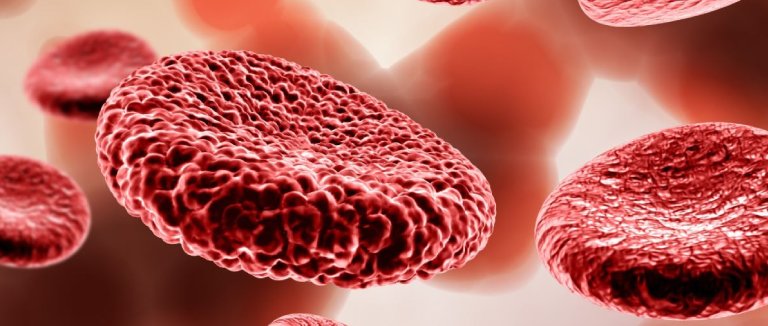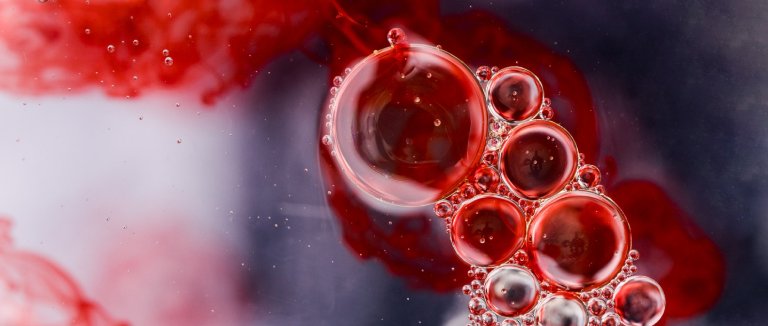Hemophilia is one of the most common hereditary bleeding disorders. People with hemophilia lack certain clotting proteins”specifically, factor VIII (hemophilia A) or factor IX (hemophilia B)”which prevents the blood from clotting properly. As a result, they are more prone to frequent and prolonged bleeding, especially into joints and muscles (hematomas). This genetic condition can significantly affect daily life, but there are effective ways to manage it. For more on it, including its symptoms, diagnosis, and treatment options, continue reading below.

What is Hemophilia?
Hemophilia is a hereditary bleeding disorder that occurs approximately in 1 out of 10,000 births worldwide. One of the most important complications of this hereditary disease, arising from a problem in the blood clotting mechanism, is the inability to stop bleeding. Therefore, it is necessary for it, a rare disease, to be monitored by specialists throughout life. For those wondering 'What is it?', the answer can be briefly summarized as a blood disorder that occurs due to the deficiency of certain proteins involved in the blood clotting mechanism.
Hemophilia has different types such as it A, B, and C. Among these, it A and B are the most commonly encountered types of it. Hemophilia A, which occurs due to a deficiency in factor VIII, is the most common type of it. According to research, it A is found in approximately 1 in 100,000 individuals. Hemophilia B, which occurs due to a deficiency in clotting factor IX, is rarer compared to it A, affecting approximately 3 out of 100,000 individuals.
What are the Causes of Hemophilia?
The production of proteins involved in the blood clotting mechanism is controlled by genes. Any mutation or alteration in these genes can lead to a decrease in the production of proteins known as clotting factors or the complete absence of protein production. Genes involved in the clotting mechanism are located on the X chromosome. While males have only one copy (XY) of the genes located on the X chromosome, females have two copies (XX). Therefore, the risk of it in males is higher compared to females. Since it is a disease transmitted through genes, the main cause of it is genetic factors.
Additionally, it can rarely occur later in life. Hemophilia that is not present at birth and develops later is called acquired it. The main cause of acquired it is the immune system of the individual recognizing factor VIII or factor IX proteins as foreign and attacking them. However, rarely, health problems such as cancer or multiple sclerosis can also cause it.
Genetic Causes and Transmission
Hemophilia is primarily an inherited disorder, passed through families via the X chromosome. The two main types”Hemophilia A and Hemophilia B”are caused by low levels or deficiencies of specific clotting factors (factor VIII and factor IX, respectively) that are coded by genes on the X chromosome.
Relationship Between Hemophilia and Color Blindness
Color blindness, like it, is a hereditary disorder that is inherited through certain genes. However, aside from both being genetic conditions, there is no direct connection or link between color blindness and it.
What are the Symptoms of Hemophilia?

Hemophilia is classified as mild, moderate, or severe, depending on the amount of clotting factor (factor VIII or IX) in the blood. Normal levels range from 50 to 150 units per 100 milliliters of blood:
Mild hemophilia: 5“30% of normal clotting factor. Bleeding usually occurs after surgery or major injuries.
Moderate hemophilia: 1“5% of normal clotting factor. Bleeding may happen after minor injuries and may last longer than normal.
Severe hemophilia: Less than 1% of normal clotting factor. Spontaneous bleeding is common”including sudden nosebleeds”and bleeding into joints and muscles can happen even without injury.
Even mild cases can produce abnormal bleeding, especially after surgery or trauma. The severity of symptoms depends on how low the clotting factor is in the blood.
The hallmark symptom of it is a tendency for excessive or prolonged bleeding. For example, women with it may experience heavier and longer-lasting menstrual periods compared to others.. The main symptoms of it are as follows:
Physical Symptoms
People with hemophilia can bleed for an unusually long time after even minor injuries or routine activities. This often results in noticeable bruising under the skin and can also cause bleeding inside joints, leading to pain and swelling.
Bleeding and Bruising Conditions
The hallmark of hemophilia is a problem with blood clotting, leading to frequent and prolonged bleeding. For example, women may experience much heavier and longer menstrual periods. Even minor injuries or routine activities can result in extended bleeding, noticeable bruising, and sometimes bleeding inside joints and muscles. In newborns, it may not be obvious after a typical birth, but difficult deliveries involving trauma can lead to immediate bruising or even intracranial bleeding. The severity and frequency of symptoms depend on the individual's level of clotting factor deficiency.
- Inability to stop bleeding,
- Unexplained bruising, especially in joints and muscles,
- Large bruises appearing after minor impacts,
- Sudden nosebleeds,
- Joint pain due to internal bleeding,
- Rarely, brain hemorrhage.
Hemophilia can also show signs early in life. The most common symptoms in babies with it include:
- Prolonged and uncontrollable bleeding after circumcision,
- Formation of lumps on the heads of babies after head injuries,
- Restlessness and crying spells in babies due to internal joint bleeding,
- Hematoma (collection of blood) in various parts of the baby's body.
Other Common Symptoms
Hemophilia isn't limited to excessive bleeding and bruising. People with this condition may also experience general symptoms like decreased appetite, weakness, or headaches. The exact symptoms and their severity can vary widely between individuals, depending on the specific type and seriousness of their ir.
How is Hemophilia Diagnosed?

Severe forms of it are often recognized within the first year of life, especially when symptoms like frequent bruising, serious bleeding (such as after circumcision), or even intracranial bleeding appear. In milder cases, the condition may go unnoticed until later in childhood or adulthood. Diagnosis starts with a thorough evaluation by a hematologist, who will look for physical signs such as unexplained bruising and will also take a detailed family history, since it is often inherited. Today, diagnosis is confirmed with various blood tests that check for levels of clotting factors and look at how well the blood clots overall. Some of these tests include:
- Complete blood count (CBC) test to measure the quantity of blood cells such as white blood cells and red blood cells in the blood,
- Prothrombin time (PT) test to measure how long it takes for the blood to clot,
- Activated partial thromboplastin time (APTT) test, another test used to measure the clotting time of blood,
- Tests to measure clotting factors VIII and IX in the blood.
How is Hemophilia Treated?
The primary goal in treating severe it is to replace the missing clotting factors using intravenous infusions. These factors can come from donated human blood or be made synthetically in a lab. This treatment is used both to stop active bleeding and prevent future episodes. For mild it, your doctor might prescribe medicines that help your body produce more clotting proteins on its own. Ongoing care and monitoring by a hematologist or specialist are essential for people living with it to maintain their health and manage any complications that arise.
* Liv Hospital Editorial Board has contributed to the publication of this content .
* Contents of this page is for informational purposes only. Please consult your doctor for diagnosis and treatment. The content of this page does not include information on medicinal health care at Liv Hospital .
For more information about our academic and training initiatives, visit Liv Hospital Academy
Frequently Asked Questions
What is hemophilia?
Hemophilia is a hereditary bleeding disorder caused by a deficiency in clotting factors, mainly factor VIII (hemophilia A) or factor IX (hemophilia B), leading to prolonged bleeding.
What causes hemophilia?
It is primarily a genetic disorder passed through the X chromosome. Rarely, it can be acquired later in life due to autoimmune conditions that destroy clotting factors.
What are the main types of hemophilia?
The main types are hemophilia A (factor VIII deficiency), hemophilia B (factor IX deficiency), and hemophilia C (factor XI deficiency, less common).
Who is at higher risk for hemophilia?
Hemophilia mainly affects males because they have only one X chromosome. Females can be carriers and may have mild symptoms.
What are the symptoms of hemophilia?
Common symptoms include prolonged bleeding, excessive bruising, nosebleeds, joint pain, and swelling due to internal bleeding.
How is hemophilia diagnosed?
Blood tests such as factor VIII and IX assays, prothrombin time (PT), and activated partial thromboplastin time (APTT) confirm the diagnosis.
Can hemophilia be cured?
Currently, there is no permanent cure, but treatment with clotting factor replacement and gene therapy options can effectively control bleeding episodes.
What complications can occur with hemophilia?
Without proper treatment, frequent bleeding can lead to joint damage, muscle hematomas, and, in severe cases, life-threatening internal bleeding.
How is hemophilia treated?
Treatment involves replacing the missing clotting factors through intravenous infusions and preventive care under a hematologist’s supervision.
Why choose Liv Hospital for hemophilia care?
Liv Hospital provides advanced diagnostic tools, personalized treatment plans, and lifelong specialist monitoring to ensure optimal health for hemophilia patients.
